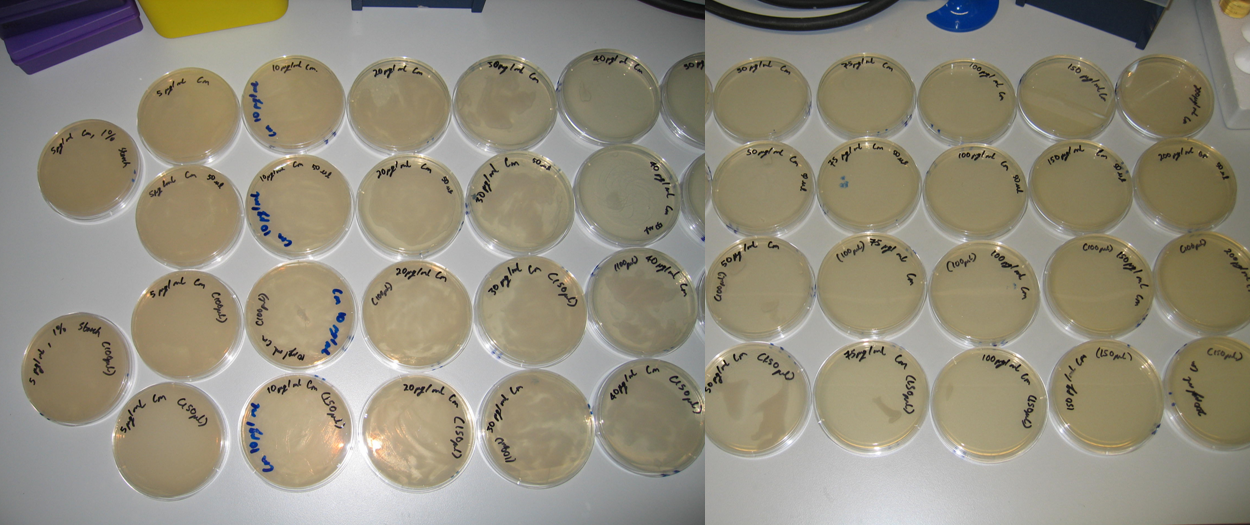From 2008.igem.org
(Difference between revisions)
|
|
| Line 6: |
Line 6: |
| | | | |
| | | | |
| - | If a culture of cells becomes contaminated with another chloarmphenicol resistant bacterium and we lack an extra resistance marker, the upper limit at which our cells can survive in chloramphenicol may allows the removal of the contaminating strain or species. | + | If a culture of cells becomes contaminated with another chloarmphenicol resistant bacterium and we lack an extra resistance marker, the upper limit at which our cells can survive in chloramphenicol may allow the removal of the contaminating strain or species. |
| | | | |
| | | | |
Revision as of 00:36, 30 October 2008
|
Chloramphenicol Acetyltransferase Characterisation
|
|
|
Characterisation of the chloramphenicol concentrations at which chlorampehnicol acetyltransferase (Part: BBa_J31005) (CAT) will protect cells, allowing them to grow and thrive is essentially to allow the correct selection when using the CAT gene.
If a culture of cells becomes contaminated with another chloarmphenicol resistant bacterium and we lack an extra resistance marker, the upper limit at which our cells can survive in chloramphenicol may allow the removal of the contaminating strain or species.
To this end, characterisation of chloramphenicol acetyl transferase was carried out according to this protocol
|
|
|
|
Results
The construct containing the CAT gene was integrate into the B. subtilis genome for characterisation. As such, the CAT gene is single copy only. CAT will be able to protect a cell from higher levels of chloramphenicol if it is present in a construct on a plasmid (particularly a high copy number plasmid)
Chlorampehnicol can be used for selection up to a concentration of 30μg/ml. If a higher concentration is required, a bacterium possesing a single highly expressed copy of chloramphenicol acetyltransferase can survive (with difficulty)
at up to 75μg/ml of chloramphenicol.
|
|
|
 "
"


